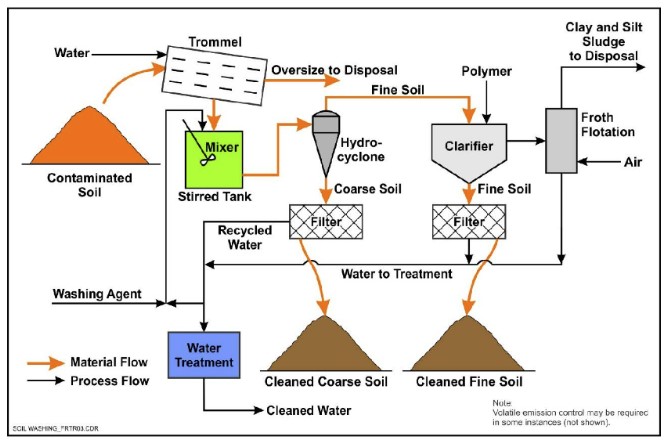M270 PFAS Treatment for Rapid Reduction of Contaminants
M270 PFAS Treatment for Rapid Reduction of Contaminants
Blog Article
Innovative PFAS Therapy Solutions for Safer Water
The boosting occurrence of PFAS contamination in water supplies demands an essential examination of ingenious treatment options. Advanced purification technologies and novel chemical treatments present appealing avenues for reducing these persistent pollutants. Furthermore, emerging bioremediation techniques provide a more lasting approach to dealing with PFAS difficulties. As regulative frameworks remain to adapt, comprehending the efficiency and scalability of these options comes to be critical. What implications do these improvements hold for public health and environmental restoration, and how can stakeholders successfully apply them in varied contexts?
Overview of PFAS Contamination
PFAS contamination has actually become a considerable ecological and public wellness issue. Per- and polyfluoroalkyl substances (PFAS) are a group of synthetic chemicals known for their persistence in the setting and human body, leading them to be commonly referred to as "for life chemicals." These compounds have actually been widely utilized in different markets, consisting of firefighting foams, water-repellent textiles, and food product packaging, mostly as a result of their water- and grease-resistant residential or commercial properties.
The widespread use PFAS has led to their detection in dirt, water supplies, and also in the blood of human beings and pets. Researches have connected PFAS direct exposure to numerous health and wellness issues, consisting of developing impacts in infants, immune system disorder, and various types of cancer. Furthermore, the environmental persistence of these compounds complicates their deterioration and elimination, elevating concerns regarding long-lasting environmental influences.
Regulatory bodies are significantly applying strict standards to check and minimize PFAS degrees in drinking water and other ecological mediums. As awareness of PFAS contamination expands, it has actually ended up being necessary for neighborhoods and markets to look for reliable therapy options to mitigate exposure and secure public health and wellness.
Advanced Filtering Technologies
As the seriousness to resolve PFAS contamination heightens, advanced purification technologies have emerged as an essential part in the removal initiatives targeted at eliminating these relentless chemicals from water sources. These modern technologies take advantage of sophisticated systems to efficiently target and record PFAS substances, which are infamously resistant to standard therapy methods.
One of one of the most appealing methods is the use of granular triggered carbon (GAC), which adsorbs PFAS particles as a result of its high surface and permeable framework. This technique has actually been widely applied in both metropolitan and commercial setups, demonstrating considerable decreases in PFAS focus. Additionally, ion exchange materials have gained grip, particularly designed to uniquely bind PFAS ions from water, thus promoting their removal.
Membrane layer purification innovations, such as reverse osmosis and nanofiltration, also reveal effectiveness in PFAS removal by physically separating impurities from water - pfas management. These systems can attain high levels of purity, making them appropriate for alcohol consumption water browse around here applications
Chemical Therapy Developments
Various chemical treatment innovations are being explored to efficiently attend to PFAS contamination in water supplies. One appealing method involves using advanced oxidation procedures (AOPs), which use powerful oxidants such as ozone, hydrogen peroxide, or chlorine dioxide incorporated with UV light to break down PFAS compounds right into much less harmful substances. This method has demonstrated efficiency in research laboratory settings, revealing possible for scalability in real-world applications.
An additional cutting-edge method is the development of ion-exchange materials particularly made to target PFAS. These materials can precisely adsorb PFAS substances from water, permitting their elimination throughout treatment procedures. Current developments have actually improved the performance and ability of these resins, making them a favorable alternative for water treatment centers.
Furthermore, scientists are checking out the usage of chemical representatives like persulfate and ferrous ions to boost the destruction of PFAS in infected water. These representatives can cause chemical responses that help with the break down of relentless PFAS compounds.
Emerging Bioremediation Methods
Current innovations in chemical therapy technologies have actually paved the means for checking out bioremediation strategies as a practical option for attending to PFAS contamination. Bioremediation harnesses the natural metabolic procedures of bacteria to weaken or transform contaminants, making it an appealing strategy for taking on relentless pollutants like PFAS.
Emerging techniques in bioremediation include using genetically crafted microorganisms that can especially target and damage down PFAS compounds. These microbial stress are being developed for their enhanced destruction abilities, my site enhancing the effectiveness of the remediation process. Furthermore, researchers are checking out the potential of plant-assisted bioremediation, where specific plant species might uptake and sequester PFAS from polluted soil and water.
Another promising strategy is the application of bioaugmentation, which includes introducing advantageous bacteria right into polluted settings to enhance the degradation of PFAS. This approach can assist in much faster remediation timelines and improve general effectiveness.

Governing Frameworks and Criteria
A thorough regulative framework is essential for properly handling PFAS contamination and ensuring public wellness defense. The raising recognition of per- and polyfluoroalkyl substances (PFAS) as environmental pollutants has actually prompted different federal and state firms to create criteria that govern their visibility in water products. The United State Epa (EPA) has developed wellness advisories and is pursuing setting enforceable restrictions for PFAS in drinking water.
State-level regulations differ significantly, with some states adopting more stringent standards than those proposed by the EPA. These policies typically include maximum contaminant degrees (MCLs) for specific PFAS compounds, surveillance demands, and reporting responsibilities for water utilities. Extra resources In addition, arising frameworks concentrate on the remediation of contaminated websites, stressing the demand for efficient treatment modern technologies.

Verdict
Finally, the growth and application of cutting-edge PFAS treatment options are crucial for resolving the pervasive concern of water contamination. Advanced purification technologies, chemical therapies, and arising bioremediation strategies collectively offer a diverse strategy to effectively decrease and deteriorate PFAS levels. As regulative structures proceed to progress, integrating these technologies will certainly be important to guard public wellness and restore the stability of polluted water resources, eventually adding to a cleaner and more secure environment.
Report this page